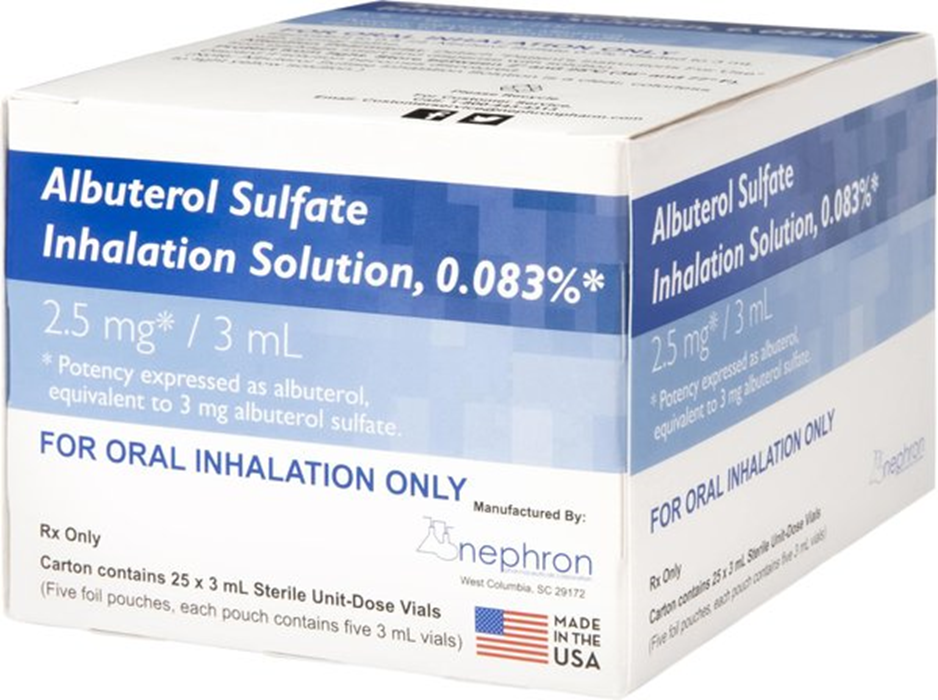A nurse in a provider's office is caring for a child who has a history of asthma. Which of the following findings should the nurse report to the provider?
Respiratory rate of 24 breaths/min
Wheezes in the lower lobes
Oxygen saturation of 95%
Peak expiratory flow rate of 80% of personal best
The Correct Answer is B
Choice A reason: A respiratory rate of 24 breaths/min is within the normal range for a child, depending on their age. It does not indicate respiratory distress or asthma exacerbation.
Choice B reason: Wheezes in the lower lobes are a sign of airway obstruction and inflammation due to asthma. They indicate that the child may need additional medication or intervention to relieve their symptoms. The nurse should report this finding to the provider.
Choice C reason: An oxygen saturation of 95% is within the normal range for a child. It does not indicate hypoxia or impaired gas exchange due to asthma.
Choice D reason: A peak expiratory flow rate of 80% of personal best is considered a green zone result, meaning that the child's asthma is well controlled. It does not indicate a need for change in the child's asthma action plan.
Nursing Test Bank
Naxlex Comprehensive Predictor Exams
Related Questions
Correct Answer is ["A","C","E"]
Explanation
Choice A reason: Balancing the scale to 0 prior to use is a correct action for the nurse to take. This ensures that the scale is accurate and does not include any extra weight from the scale itself or any objects on it.
Choice B reason: Using a stadiometer to measure the infant is not a correct action for the nurse to take. A stadiometer is a device that measures the height of a standing person. It is not suitable for measuring the length of an infant who cannot stand. The nurse should use a measuring board or a tape measure to measure the infant's length.
Choice C reason: Placing a disposable covering on the scale is a correct action for the nurse to take. This prevents the transmission of germs or dirt from the scale to the infant or vice versa. It also protects the scale from any urine or stool that the infant may produce during the weighing.
Choice D reason: Weighing the infant in a diaper is not a correct action for the nurse to take. A diaper can add extra weight to the infant's measurement and affect the accuracy of the result. The nurse should weigh the infant without any clothing or diaper.
Choice E reason: Measuring the infant from crown of the head to the heels of feet is a correct action for the nurse to take. This is the standard method of measuring the length of an infant. The nurse should place the infant on a flat surface, align the head with the top of the measuring board or tape measure, and extend the legs fully. The nurse should then read the measurement at the bottom of the infant's feet.
Correct Answer is C
Explanation
Choice A reason: Acetaminophen suppository is not a likely prescription, as it is used to reduce fever and pain, which are not the main problems of the toddler. The toddler has a high axillary temperature of 39.5°C (103.1°F), which is not considered a fever in children under 2 years old. The normal axillary temperature range for children is 36.5°C to 37.5°C (97.7°F to 99.5°F).
Choice B reason: Oral rehydration solution is not a probable prescription, as it is used to prevent or treat dehydration caused by diarrhea, vomiting, or excessive sweating, which are not the main problems of the toddler. The toddler has a normal respiratory rate of 22/min and oxygen saturation of 98%, which indicate adequate hydration and oxygenation.
Choice C reason: Nebulized albuterol is a possible prescription, as it is used to treat bronchospasm, which is a common complication of respiratory infections in children. The toddler has a high apical heart rate of 142/min, which may indicate respiratory distress or hypoxia. The toddler is also pulling at his ear, which may indicate an ear infection or pain.

Choice D reason: Intravenous antibiotics are not a likely prescription, as they are used to treat bacterial infections, which are not the main problems of the toddler. The toddler has no signs or symptoms of a bacterial infection, such as purulent discharge, foul odor, or localized inflammation. The toddler may have a viral infection, which does not respond to antibiotics.
Whether you are a student looking to ace your exams or a practicing nurse seeking to enhance your expertise , our nursing education contents will empower you with the confidence and competence to make a difference in the lives of patients and become a respected leader in the healthcare field.
Visit Naxlex, invest in your future and unlock endless possibilities with our unparalleled nursing education contents today
Report Wrong Answer on the Current Question
Do you disagree with the answer? If yes, what is your expected answer? Explain.
Kindly be descriptive with the issue you are facing.
